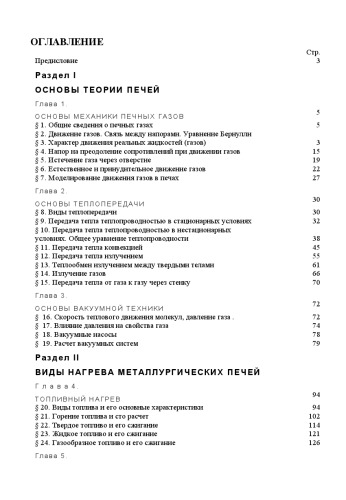- 2 402 202 книги
- Поиск
libcats.org






The Adhesive Interaction of Cells,
David Garrod, A. J. North, M. A. J. ChidgeyThe aim of ''The Adhesive Interaction of Cells'' has been to assemble a series of reviews by leading international experts embracing many of the most important recent developments in this rapidly expanding field. The purpose of all biological research is to understand the form and function of living organisms and, by comprehending the normal, to find explanations and remedies for the abnormal and for disease conditions. The molecules involved in cell adhesion are of fundamental importance to the structure and function of all multicellular organisms. In this book, the contributors focus on the systems of vertebrates, especially mammals, since these are most relevant to human disease. It would have been equally possible to concentrate on developmental processes and adhesion in lower organisms.
A major function of adhesion molecules is to bind cells to each other or to the extracellular matrix, but they are much more than ''glue''. Adhesions in animal tissues must be dynamic-forming, persisting, or declining in regulated fashion- to facilitate the mobility and turnover of tissue cells. Moreover, the majority of adhesion molecules are transmembrane molecules and thus provide links between the cells and their surroundings. This gives rise to another major function of adhesion molecules, the capacity to transduce signals across the hydrophobic barrier imposed by the plasma membrane. Such signal transduction is crucially important to many aspects of cellular function including the regulation of cell motility, gene expression, and differentiation.
The work in this book progresses through four sections. Part I discusses the four major families of adhesion molecules themselves, the integrins (Green and Humphries), the cadherins (Stappert and Kemler), the selectins (Tedder et al.) and the immunoglobulin superfamily (Simmons); part 2 considers junctional complexes involved in cell interactions: focal adhesions and adherens junctions (Ben Ze'ev), desmosomes (Garrod et al.), and tight junctions (Citi and Cordenonsi). The signaling role of adhesion molecules is the focus of part 3, through integrins and the extracellular matrix (Edwards and Streuli), through platelet adhesion (Du and Ginsberg), and in the nervous system (Hemperley). In part 4, the aim is to show how adhesive phenomena contribute to important aspects of cell behavior and human health. Leukocyte trafficking (Haskard et al.), cancer metastasis (Marshall and Hart), cell migration (Paleck et al.), and implantation and placentation (Damsky et al.) are the topics considered in depth.
The different sections are, of course, not mutually exclusive: it is both undesirable and impossible to separate structure from function when considering cell adhesion. Each chapter has its unique features, but some overlap is both invevitable and valuable since it provides different perspectives on closely related topics. We hope that the whole contributes a valuable and stimulating consideration of this important topic.
A major function of adhesion molecules is to bind cells to each other or to the extracellular matrix, but they are much more than ''glue''. Adhesions in animal tissues must be dynamic-forming, persisting, or declining in regulated fashion- to facilitate the mobility and turnover of tissue cells. Moreover, the majority of adhesion molecules are transmembrane molecules and thus provide links between the cells and their surroundings. This gives rise to another major function of adhesion molecules, the capacity to transduce signals across the hydrophobic barrier imposed by the plasma membrane. Such signal transduction is crucially important to many aspects of cellular function including the regulation of cell motility, gene expression, and differentiation.
The work in this book progresses through four sections. Part I discusses the four major families of adhesion molecules themselves, the integrins (Green and Humphries), the cadherins (Stappert and Kemler), the selectins (Tedder et al.) and the immunoglobulin superfamily (Simmons); part 2 considers junctional complexes involved in cell interactions: focal adhesions and adherens junctions (Ben Ze'ev), desmosomes (Garrod et al.), and tight junctions (Citi and Cordenonsi). The signaling role of adhesion molecules is the focus of part 3, through integrins and the extracellular matrix (Edwards and Streuli), through platelet adhesion (Du and Ginsberg), and in the nervous system (Hemperley). In part 4, the aim is to show how adhesive phenomena contribute to important aspects of cell behavior and human health. Leukocyte trafficking (Haskard et al.), cancer metastasis (Marshall and Hart), cell migration (Paleck et al.), and implantation and placentation (Damsky et al.) are the topics considered in depth.
The different sections are, of course, not mutually exclusive: it is both undesirable and impossible to separate structure from function when considering cell adhesion. Each chapter has its unique features, but some overlap is both invevitable and valuable since it provides different perspectives on closely related topics. We hope that the whole contributes a valuable and stimulating consideration of this important topic.
Популярные книги за неделю:

Проектирование и строительство. Дом, квартира, сад
Автор: Петер Нойферт, Автор: Людвиг Нефф
Размер книги: 20.83 Mb

Система упражнений по развитию способностей человека (Практическое пособие)
Автор: Петров Аркадий НаумовичКатегория: Путь к себе
Размер книги: 818 Kb

Сотворение мира (3-х томник)
Автор: Петров Аркадий НаумовичКатегория: Путь к себе
Размер книги: 817 Kb

Радиолюбительские схемы на ИС типа 555
Автор: Трейстер Р.Категория: Электротехника и связь
Размер книги: 13.64 Mb
Только что пользователи скачали эти книги:

The German Army League: Popular Nationalism in Wilhelmine Germany
Автор: Marilyn Shevin Coetzee
Размер книги: 13.35 Mb

Печи для цветных и редких металлов
Автор: Крапухин В.В.Категория: КНИГИ ТЕХНИКА
Размер книги: 16.07 Mb







